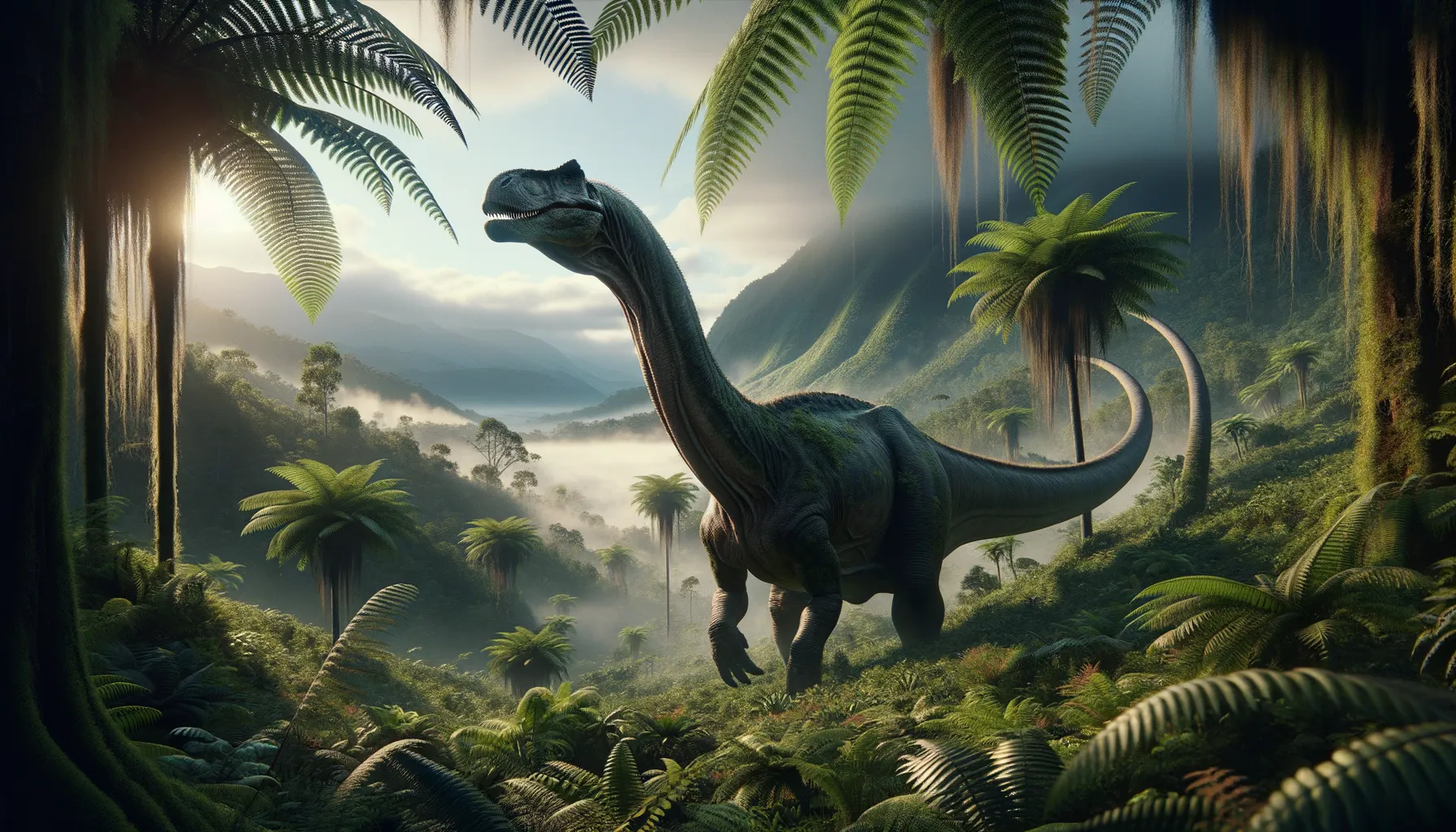
Ligabuesaurus
Gentle giants of the ancient world.
Period
Cretaceous
Length
Approximately 15 meters in length.
Height
Around 10 meters tall.
Weight
Approximately 10 tons.
Ligabuesaurus was a massive sauropod dinosaur known for its long neck and tail. It roamed the lands of South America during the late Cretaceous period, around 100 million years ago. Its large body size is typical of its group, making it one of the gentle giants of its time. Despite being bulky, it was well-equipped to feed on high vegetation, owing to its impressive height and extendable neck.
Diet
Ligabuesaurus was herbivorous, primarily feeding on plants. Its long neck allowed it to reach high branches and foliage, accessing vegetation that other herbivores couldn't. This dietary adaptation helped it thrive in the vegetative landscapes of the Cretaceous period.
Hunting
Being a herbivore, Ligabuesaurus did not hunt other animals. Instead, it likely spent much of its time foraging for plants and grazing on abundant vegetation. It likely used its height advantage to reach tree leaves that other smaller dinosaurs couldn't.
Environmental challenges
Ligabuesaurus faced significant environmental challenges, such as changing climate conditions leading to fluctuating food availability. Predators would have been a constant threat, requiring it to rely on size for defense. Seasonal droughts might have affected water and food resources, which could have influenced migration patterns. Adapting to these challenges was key to its survival.
Speed
Likely slow-moving due to its large size.
Lifespan
Estimated to be several decades.
First discovery
Discovered in Argentina in 2001.
Fun Facts
- Ligabuesaurus was a plant-eating dinosaur that lived during the Early Cretaceous period, approximately 130 million years ago.
- The dinosaur was named after Dr. Giancarlo Ligabue, an Italian paleontologist and explorer who contributed to its discovery.
- Ligabuesaurus was discovered in the Neuquén Basin in Argentina, a region famous for its rich fossil deposits.
- It is known from a partial skeleton, which provided scientists with valuable insights into its size and lifestyle.
- Ligabuesaurus is believed to have been a medium-sized sauropod, with a long neck and tail, typical characteristics of its group.
- The discovery of Ligabuesaurus has helped paleontologists understand more about the diversity of sauropods in South America during the Cretaceous.
- While not as large as some of its famous relatives like Argentinosaurus, Ligabuesaurus remains an important piece of the puzzle in the dinosaur world.
Growth and Development
As with many large dinosaurs, Ligabuesaurus experienced a long growth period, gradually reaching its enormous size over many years. Juveniles likely grew rapidly to reduce vulnerability to predators. Fossil evidence suggests that their bones grew continuously, which indicates a high metabolic rate compared to other reptiles. This development was crucial for surviving in a predatory environment.
Habitat
Ligabuesaurus thrived in lush, forested environments of South America, where there was an abundance of food. Its habitat likely included flood plains and river valleys, which provided access to water. The ecosystem would have supported a variety of plant life, essential for its herbivorous diet. Seasonal changes may have influenced its local movement in search of better grazing areas.
Interaction with other species
As a large herbivore, Ligabuesaurus likely coexisted with other plant-eating dinosaurs and various predators. It might have traveled in herds for protection against carnivorous threats. Its sheer size would have deterred smaller predators, though large theropod dinosaurs could have posed a danger. The species likely played a role in shaping its environment, helping to maintain plant diversity through constant grazing.
Natural lifespan
Ligabuesaurus likely lived up to several decades, assuming it avoided predation and disease.
Reproduction
Reproduction for Ligabuesaurus was likely similar to other sauropods, with females laying clutches of eggs. Nesting sites might have been selected for protection from predators, possibly using communal nesting methods. Juveniles, after hatching, would grow rapidly to enhance their survival rate. Parental care is uncertain, but group behavior could have offered some protection for the young.
Social behaviour
Ligabuesaurus may have exhibited some form of social behavior, possibly living in herds like other sauropods for mutual protection. Herd life would have helped safeguard the young and vulnerable members against predators. Communication among members could have taken place through vocalizations or visual signals. Social structures were likely loose, given the solitary nature during feeding.
Fossil locations
Fossils of Ligabuesaurus have been primarily discovered in Argentina, indicating its habitat was in South America. The initial discovery in the Neuquén Province provided critical insights into its existence during the Cretaceous. These fossils are crucial in understanding the dinosaur fauna of the Southern Hemisphere. The location has become significant for paleontological research in uncovering the history of the Titanosauria group.
